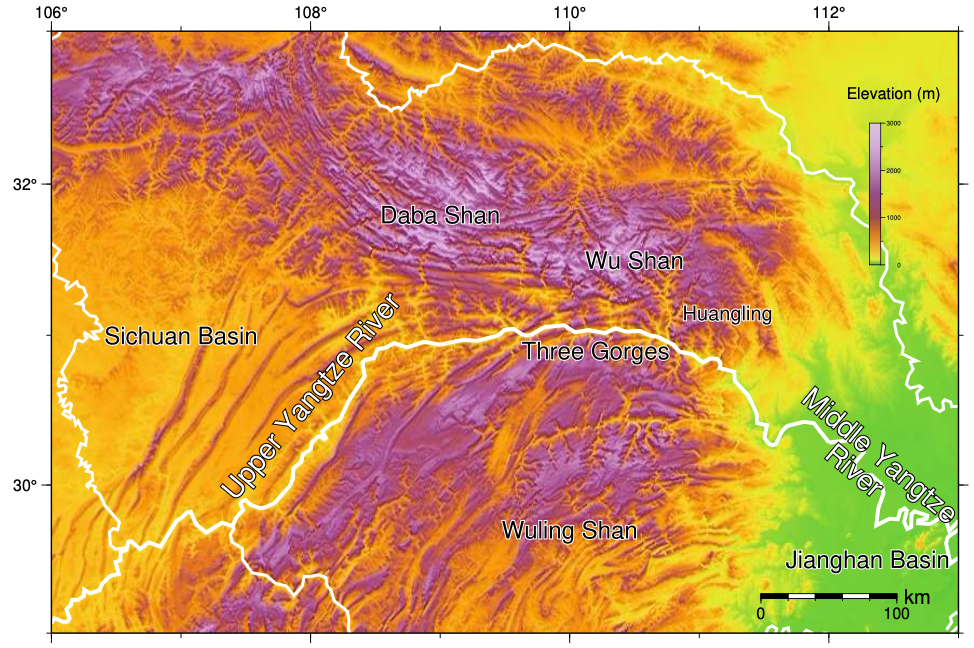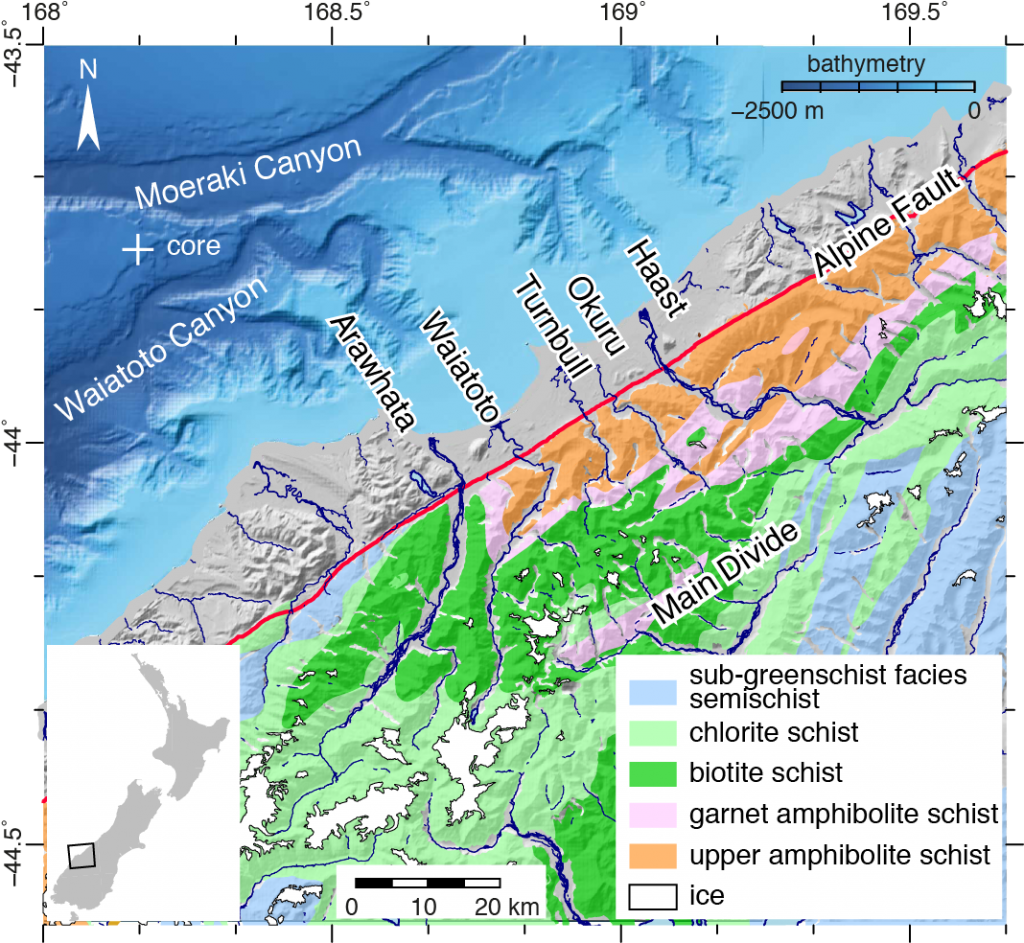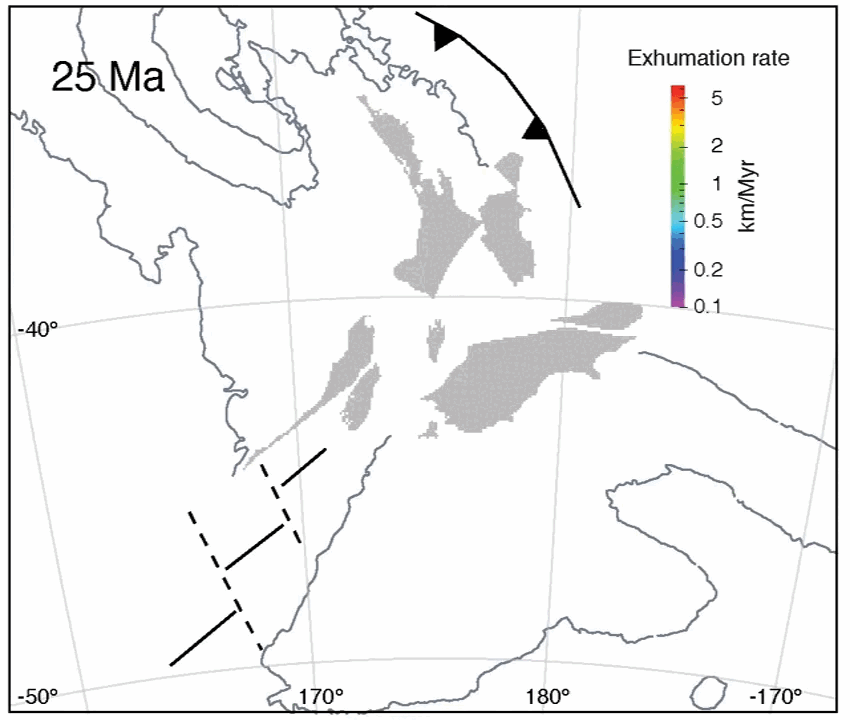Incision of the Three Gorges, Yangtze River

The Three Gorges are a series of narrow, deep valleys that cut through high mountains in central China. The landscape evolution of the gorges is an active and important debate, as their formation is hypothesised to signify the birth of the modern Yangtze River that flows from the Tibetan Plateau to East China. We studied the Yangtze tributaries in the Huangling and Wuling regions on the opposite sides of the gorges. Linear inversions of the river long profiles suggest that rapid incision of the tributaries started around 21–16 Ma. We infer this as the consequence of the connection between the Upper and Middle Yangtze, which caused a base level drop of the water catchments in the area. This is consistent with the conclusion from a 3D crustal thermal model, which was constrained using new and previously published thermochronological data.
Erosion of the Southern Alps during Deglaciation

We estimated how mountain erosion evolves under a changing climate, through a sediment provenance analysis of marine and fluvial deposits. Raman spectroscopy of carbonaceous material (RSCM) is used as a novel sediment tracer. RSCM is a method often used in metamorphic geology, to estimate the peak temperature a rock experienced during its burial history. We used the temperature measured on single sediment grains from the West Coast rivers and submarine canyon to trace their schist or semischist source rocks in the Southern Alps of New Zealand. The results show that the sediments predominantly derived from high regions near the Main Divide, probably mainly erosion products from large landslides. Samples of different ages (~21-1 ka) also indicate a marked change in erosion pattern of the source region from Last Glacial Maximum to the Holocene, with a decreased proportion of sediment contribution from lower parts of the catchments and increased from high-elevation areas. We interpret this change to be driven by the upstream retreat of the glaciers.
25-Million-Year Exhumation of New Zealand

In Frédéric Herman’s group, we constrained a large-scale exhumation model of the basement rocks of New Zealand during the late Cenozoic plate convergence since 25 Ma, using the published thermochronological ages. The comparison of this model and the plate tectonic history highlights the importance of tectonics in controlling the rock exhumation pattern at a convergent margin, and suggests that the impact from climate on mountain erosion can only be detected in regions with slow to moderate tectonic deformation.
Exhumation of the North Island, New Zealand
My PhD studied the exhumation process of the basement rocks of North Island, New Zealand. New thermochronological data and thermal history models reveal rock exhumation processes during the Gondwana (Mesozoic) and Hikurangi (late Cenozoic) subduction cycles of the New Zealand plate margin. On the Hikurangi margin, the estimated rock exhumation pattern suggests crustal shortening and thickening as the most important tectonic processes that drive the uplift and unroofing of the inner forearc. The thesis was supervised by Diane Seward, Tim Little and Barry Kohn.